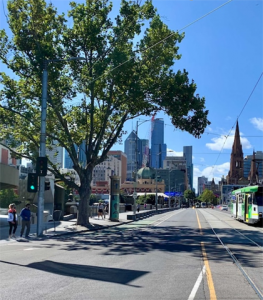Regional Australia attracting more migrants
The growing exodus of Australians from cities to the regions is revealed in the latest data from the Australian Bureau of Statistics (ABS).
The data shows regional Australia experienced its greatest inflow of residents since the ABS started recording internal migration in 2001.
 The figures show 233,100 people moved to regional Australia last year, while 190,200 left the regions to move to capital cities.
The figures show 233,100 people moved to regional Australia last year, while 190,200 left the regions to move to capital cities.
This resulted in a net gain of 43,000 new residents in the regions, up from 18,900 in 2019, and the largest gain on record.
Regional Queensland had the biggest influx, up nearly 17,000 people, while regional Victoria gained more than 13,400 and regional NSW added 12,700 residents.
ABS director of demography Phil Browning said the figures showed there had been many residential moves within Australia during the pandemic.
Migration between states was also significant, the data shows.
Victoria had its first interstate population loss since 2008, with a net 12,700 people fleeing to other states, while Queensland had its highest net gain since 2004, up 30,000 residents.
Capital cities truly suffered a COVID-induced exodus last year, resulting in Sydney losing 31,600 people to internal migration, while Melbourne lost 26,100 – the largest annual net loss for Victoria’s capital on record.
Net migration is the difference between arrivals and departures, so the figures reflect not just the number of people moving to the regions, but also the number of people staying put.
ABS demographer Andrew Howe said a net loss of people from the capitals has been seen before, but the amount of people staying in the regions is new.
“That’s always happened for decades — Australia has had more people departing the capitals than entering the capitals,” Mr Howe said.
“What’s happened in 2020 though, is that number of people actually leaving the regions for the capitals has come down quite substantially.
“That outflow from the regions has slowed down,” he said.
Mr Howe said the migration patterns for Melbourne last year were out of the ordinary.
“The substantially different trends we’re seeing for Melbourne — it’s implying that there is a pandemic impact with internal migration patterns,” he said.
Greater Melbourne had a net loss of 26,000 people in 2020.
“In 2019, that was basically zero and in 2018 more people moved into Melbourne than moved out,” Mr Howe said.
“So, to have a 26,000 net loss over 2020, that’s the highest net loss for Melbourne on record.”
Sydney also lost about 30,000 people in net terms, but that was on par with recent decades.
“Melbourne was substantially different in 2020, whereas, other capitals, not so different,” Mr Howe said.
He said roughly half of that outflow of people from Melbourne went to other parts of Victoria and the others went interstate.
“The net outflow for Victoria isn’t unprecedented — back in the 90s, with recession we also had large outflows from the state,” he said.
“What was happening then though is that both regional Victoria and Melbourne were losing out.
“Whereas in 2020 it’s Melbourne with that large net loss, regional Victoria actually gained around 13,000 people over the 2020 calendar year.”
Queensland was by far the most popular destination, with a net gain of 30,000 people in 2020.
The next closest was Western Australia with 1,385.
Mr Howe said it was the highest net gain of internal migrants for Queensland in more than a decade.












